Bang and Olufsen Beosound A5 Review
Ready for summer days on a picnic blanket?





Verdict
Yes, the looks are divisive and yes, it’s priced on the north side of optimistic. But that the Beosound A5 has it where it counts cannot be denied.
Pros
- Big, bold, and confident sound
- Looks nothing like your average portable wireless speaker
- Admirably far-sighted engineering
Cons
- Costs as much as a black-market kidney
- Looks nothing like your average portable wireless speaker
- Can’t muster the ‘360-degree’ sound it reckons it can
Key Features
- Power280 watts of Class D amplification
- Speakers130mm bass driver; 2 x 50mm midrange driver; 20mm tweeter
- ConnectivityBluetooth 5.2 and Wi-Fi 6
Introduction
How much design is too much design? If you’re familiar with Bang & Olufsen, you’ll know the company’s answer to that question is something along the lines of “you can never have too much design”.
Which brings me to the Beosound A5 portable wireless speaker. It’s orders of magnitude more expensive than its most expensive rivals, and there’s no two ways about it: it has been designed, and then some. But it takes more than a lofty asking price and some premium materials to make a lasting impression…
The Bang & Olufsen Beosound A5 is on sale, and in the UK it sells for £899. It goes for $1099 in the USA, and in Australia it will cost you AU$1649. You won’t be staggered to learn this makes the A5 not quite the most expensive battery-powered wireless portable speaker you can buy.
The most expensive is also the Beosound A5 – the dark oak version (which has slats instead of the weave of my review sample, and black anthracite aluminium rather than silver) is an even more remarkable £999 / $1199 / AU$1799.
Design
- Premium materials, expertly deployed
- 187 x 285 x 130mm (HxWxD)
- Physical controls
I don’t really need to labour the point. Bang & Olufsen has delivered a premium portable wireless speaker that looks very much like a picnic basket.
If you listen to B&O, you’ll hear all about how there’s a direct line, in design terms, from vintage products like its Beolit 607, 800 or 1000 models from back in the day. If you listen to GamFratesi Studio, designers of the Beosound A5 in conjunction with Bang & Olufsen, you’ll find the look is partly inspired by Panama hats.
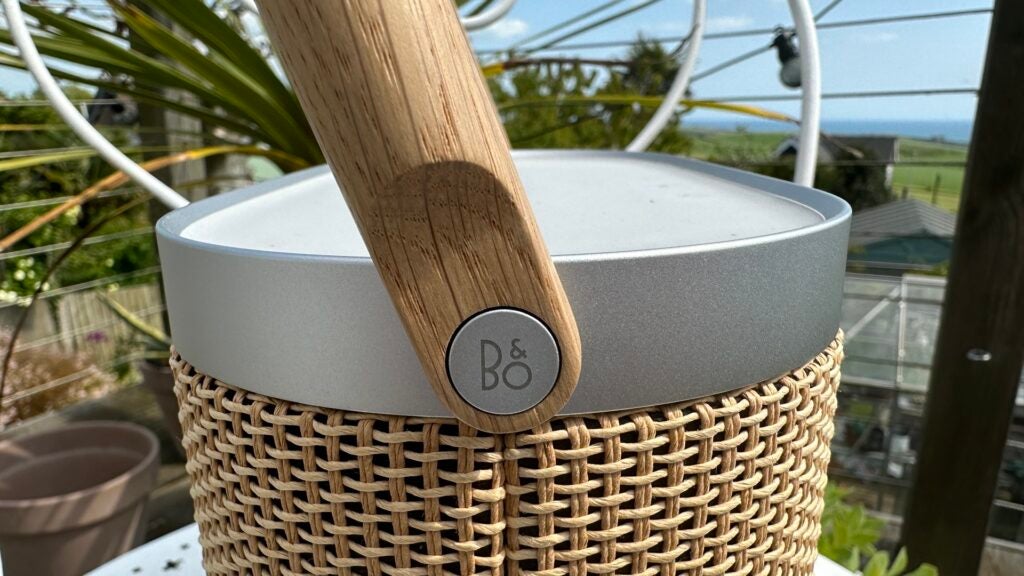
Naturally, this being Bang & Olufsen, the Beosound A5 is the most lavishly designed, solidly constructed, and beautifully finished picnic basket around. The paper fibre weave that constitutes most of its surfaces is hard-wearing and decorative. The anodised aluminium that makes up the top- and bottom plates of the speaker are touchy-feely, and expertly fitted and finished.
The physical controls on the top surface are recessed behind a layer of pleasingly rubberised material. The smooth oak handle that’s pinned to the body of the speaker using casually branded hinge-pins, is perhaps the most pleasant part of the entire thing as far as feel is concerned. If there’s a more tactile wireless speaker available, I haven’t had the opportunity to touch it.
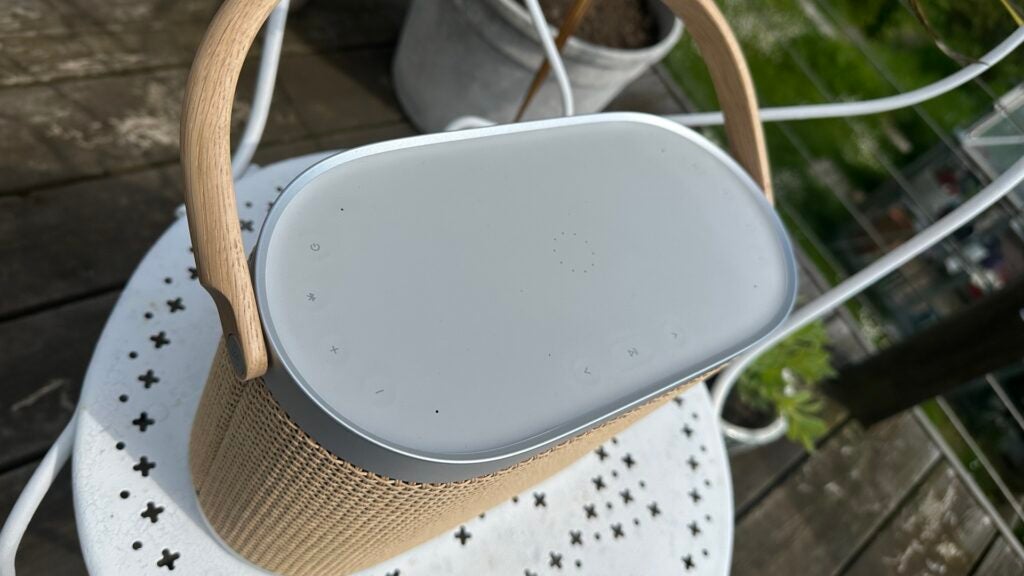
Those physical controls cover off play/pause, volume up/down, skip forwards/backwards, power on/off, and Bluetooth pairing. There’s also a Qi charging patch on the speaker’s top surface, so you can charge your smartphone even as it’s streaming tunes. And there are four preset buttons, the function of which can be specified in the Bang & Olufsen Music control app.
Features
- 130mm bass driver; 2 x 50mm midrange driver; 20mm tweeter
- 280 watts of Class D amplification
- App and (up to a point) voice control
- Bluetooth 5.2 and Wi-Fi 6
As well as letting you choose your four shortcuts (to favourite radio stations, possibly, or favourite playlists), the app has plenty of other functionality. The brilliant Beosonic graphic EQ adjuster puts in a welcome appearance, and there is also the ability to turn loudness on or off, check for software updates, integrate your Deezer account and use either the Bang & Olufsen Radio feature or TuneIn to access the planet’s radio stations.
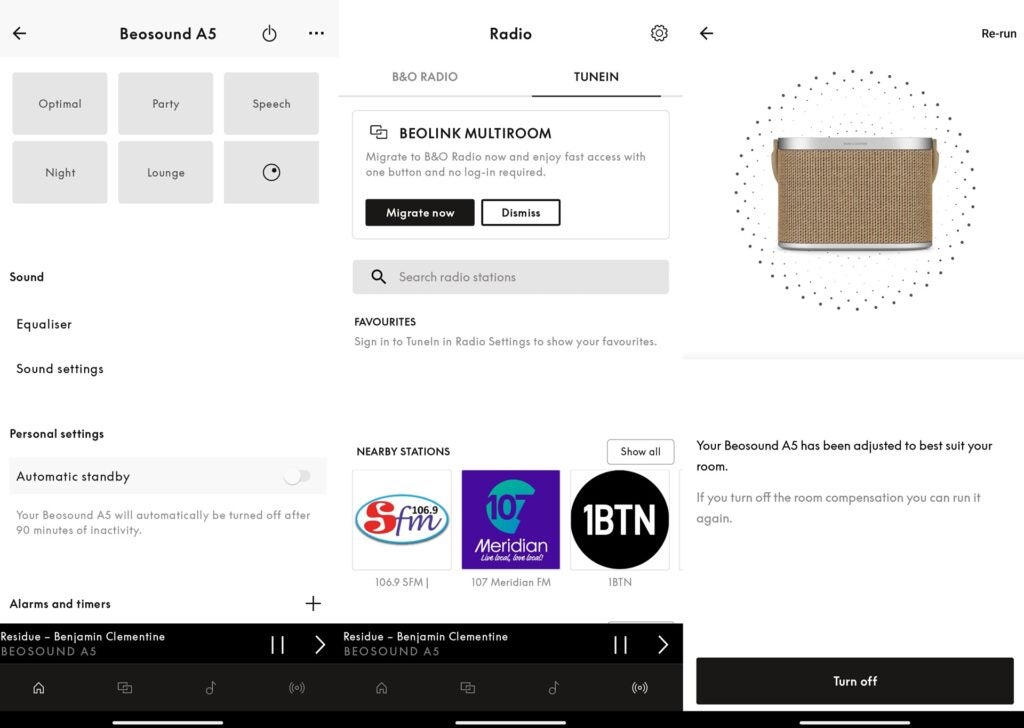
You can create a stereo pair (with another A5) or a multi-room system (using other Bang & Olufsen speakers built on the company’s Mozart platform – more on that later). It lets you switch ‘omni’ sound (which is how Bang & Olufsen describes 360-degree sound) on or off, and it lets you run a routine to calibrate the Beosound A5 to the specific position it finds itself in. Comprehensive is not too strong a word.
You can also control the A5 using Google Assistant. But despite its native compatibility, the speaker’s mic (for reasons only Bang & Olufsen can explain) isn’t able to accept Hey Google commands. You’ll need to use your smartphone to issue your voice commands.
So yes, the Mozart platform. The Beosound A5, like most recent Bang & Olufsen speakers, is built on it – and it means the A5 is about as simple to service and to repair as possible. It also means the streaming module can easily be changed should such a thing become necessary. And it allows the company to make good on its desire for the A5 to have an existence beyond first life, by supporting reuse, recycling and even remanufacturing.

The Beosound A5 has a total of 280 watts of Class D amplification, powering four drivers: a 130mm bass driver, a pair of 50mm midrange drivers and a 20mm tweeter. As with the company’s much more expensive Beolab loudspeakers, the drivers are beam-forming – and that’s how the A5 manages to deliver ‘omni’ sound. ‘Omni’, by the way, is not to be confused with spatial audio of the Dolby Atmos variety – such gimmickry is not indulged in Bang & Olufsen-land.
The A5 uses Bluetooth 5.2 and Wi-Fi 6 for wireless connectivity. The later means Apple AirPlay 2, Chromecast, Spotify Connect and Tidal Connect are all available, while the former is (again, for reasons only Bang & Olufsen can make sense of) compatible only with SBC and AAC codecs. You can spend a lot less than this on a wireless speaker and enjoy some higher-quality aptX or LDAC Bluetooth streaming.
An IP65 rating means the Beosound A5 can stand up to a lot of what the British weather can chuck at it, and a battery life of 12 hours or so means it has endurance in this respect too. Naturally, the battery will drain more quickly if you’re playing at top volume or charging your smartphone on the Qi patch (or both) – but two hours on the mains gets you back to 80% capacity and three will top the battery up fully.
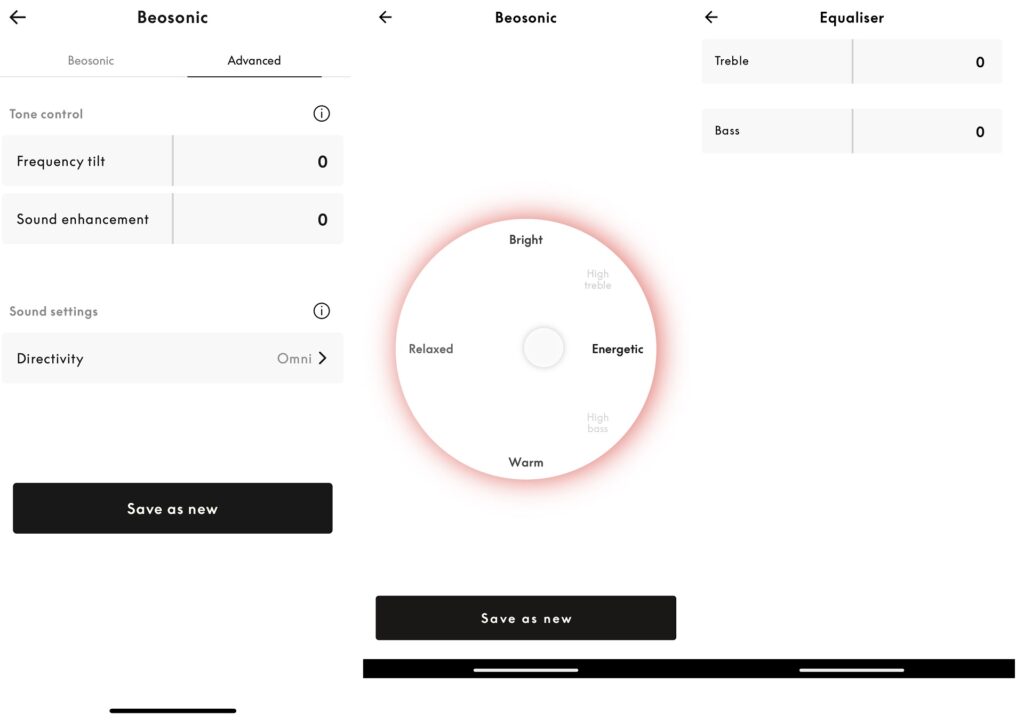
It’s not unusual for Bang & Olufsen to be coy about the native resolution of the DACs fitted to its equipment, but it’s particularly disagreeable in this instance. After all, someone with the money to spend on a Beosound A5 probably has the money to pay for a hi-res music streaming service subscription – and are likely to want to know their new speaker can make the most of it.
Sound Quality
- Big, burly sound
- Scale and dynamism to spare
- Not, strictly speaking, 360-degree sound
At a reasonably compact and discreet 187 x 285 x 130mm (HxWxD), the Beosound A5 is far from the largest portable speaker around. The sound it makes, though, is considerably larger than the cabinet it comes from.
Where straightforward scale is concerned, the A5 is never less than impressive. The idea it can create immersive 360-degree sound is fanciful – but that shouldn’t detract from the undeniable depth and width of its sound. It’s not the only wireless speaker able to escape its physical boundaries, but it does so to an almost startling degree.
And this big sound is made up of a lot of expertise in the small areas. Tonality, for instance, is convincingly natural throughout the frequency range – there’s next-to-no colouration of sound, just a faithful and accurate rendition. And from the top of the frequency range to the bottom, the Beosound A5 is balanced and deft – it transitions from high frequencies to the midrange and then to low frequencies with no discernible hand-over and no change of character. Nothing is underplayed, nothing sticks out – it’s an entirely even-handed performer.
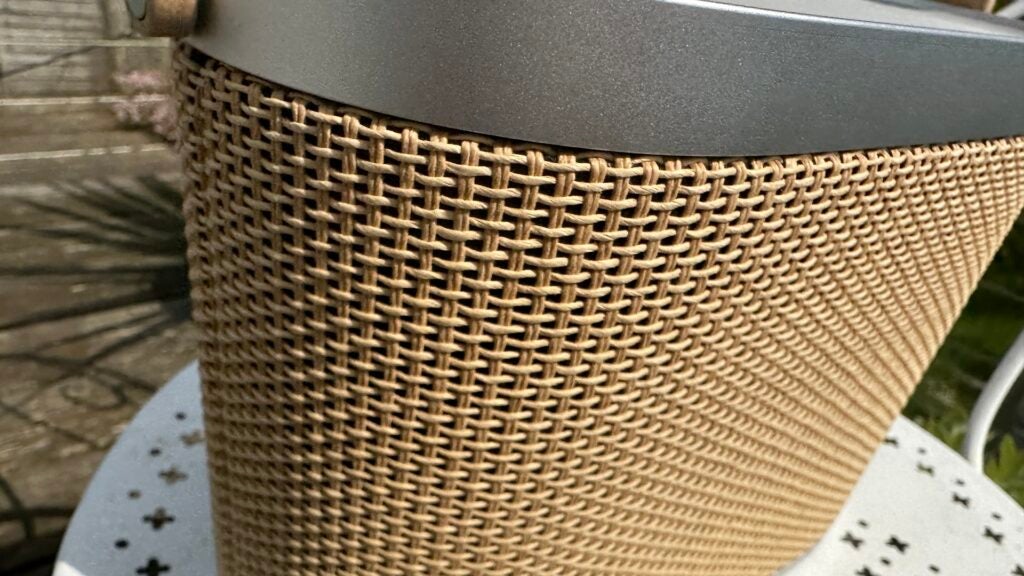
I streamed a file of BC Camplight’s The Last Rotation of Earth to an Apple iPhone 14 Pro via AAC Bluetooth and the Bang & Olufsen’s talents are made apparent. It’s a slightly hazy, radio-friendly recording, but the A5 can open it up, lay it out securely on its big, well-organised soundstage, and make each element secure in a space. Despite the disparate nature of the instrumentation, tonality is convincing – and the unity, the togetherness of the way the A5 presents the song makes it no effort whatsoever to listen to.
The speaker digs deep into the frequency range and hits hard, but it gives bass sounds both plenty of detail and an awful lot of control. This straight-edged way with the low end means rhythmic expression is good, and momentum is considerable. There seems little chance of this speaker ever becoming bogged down by its own low-frequency presence.
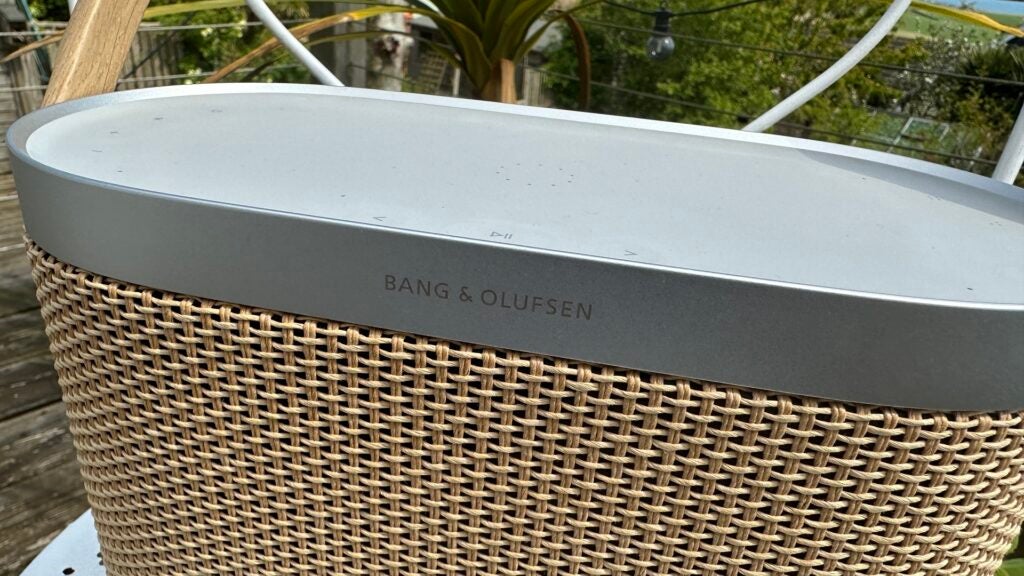
It’s a similar story of detail and control at the opposite end of the frequency range – treble sounds are clean and bright, include plenty of detail, and remain composed when you’re listening at big volumes (and believe you me, the A5 is capable of big volumes). In the midrange, meanwhile, the speaker communicates eloquently – it allows a vocalist to fully express their attitude and intentions and allow them just a little pocket of space in which to operate without estranging them from the rest of the performance.
Dynamic ability is good too, both where the obvious quiet-to-loud transitions and the harmonic variations in a solo instrument are concerned. And the A5’s ability to organise a soundstage and a recording means even the most complex, element-heavy recordings around are open and explicit.
Latest deals
Should you buy it?
You want the best-sounding battery-powered portable wireless speaker around: And as long you don’t care what it looks like or how much it’s going to cost you.
You know what became of Little Red Riding Hood: She had a picnic basket too, didn’t she?
Final Thoughts
It doesn’t do to pre-judge a product. But it’s difficult not to when that product is a) at least twice the price of the best and most expensive of its rivals, and b) it shows up looking like the Beosound A5 looks.
No, it’s not twice as good to listen to as a DALI Katch G2 or a Sonos Move, say – but that it’s the best-sounding portable wireless speaker around is not really up for question.
How we test
We test every wireless speaker we review thoroughly over an extended period of time. We use industry standard tests to compare features properly. We’ll always tell you what we find. We never, ever, accept money to review a product.
Find out more about how we test in our ethics policy.
Tested for more than a week
Tested with real world use
FAQs
There’s no fast charging support as such with the Beosound A5, but charge it for two hours and it can recover up to 80% of its battery charge.
Full specs
Jargon buster
Bluetooth
Bluetooth is a method of wireless transmission that allows for the exchange of data between devices over short distances.Qi Wireless Charging
The most common format for wireless charging and the one supported by the majority of devices. Charge speeds vary a lot by the phone.








